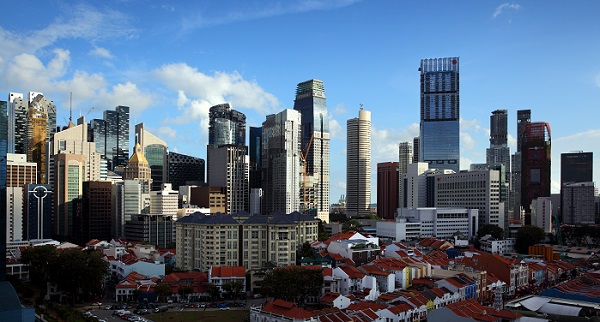
SINGAPORE (June 28): Remote working is unlikely to dampen office demand in Asia Pacific, say consultants. In a survey of 106 respondents in the region by CBRE, over 70% of management lean towards having their staff working from the office, reported EdgeProp Singapore.
“That is a very confirmed signal from the leadership that coming back to the office… will remain the [norm],” said Ada Choi, CFA, head of occupier research, APAC, and head of data intelligence and management, APAC, at CBRE Research.
The findings are similar to those by Knight Frank, which found that occupiers in Asia Pacific are exhibiting more resilience against work-from-home arrangements. “With the early completion of lockdowns around the region, most markets have opened their economies and workplaces in lieu of controlled Covid-19 cases,” it highlighted in a report, which draws responses from almost 400 businesses worldwide, with a combined headcount of over 10 million workers.
“Without the sustained restrictions on returning to workplaces, APAC (Asia Pacific) firms do not feel the same pressures to adjust their space provision as much as their global peers,” it said. And compared to 25% of global respondents, only 14% of Asia Pacific’s occupiers expect the pandemic to permanently alter their real estate strategies.
In fact, some 30% of occupiers in the region are looking at increasing their office footprint, rather than downsizing. In comparison, 5% of global respondents are likely to cut their real estate portfolio, rather than increase it.
However, Knight Frank noted that the positive sentiments across office upsizing are not uniform, with larger proportions of Asia Pacific’s respondents either seeking to increase, or decrease, their real estate portfolios over 20%, as compared to their global counterparts. The research consultancy attributes this to a difference in industries, with better- performing sectors such as technology, life science, and e-commerce players continuing to expand their footprints, while sectors of the old economy maintain a conservative stance on office requirements.
Change in the way of evaluating office footprint
To that end, CBRE’s Choi observed the pandemic has caused corporations to change the way they decide on their real estate strategy. It used to be a linear decision-making model: “If we have the business growth, we think about how many people we want to add, and then we think how much space [we need], with the metrics of about 100 sq ft per person [for instance], and then we think about the location strategy, whether it’s in CBD, or in a decentralised location.”
But now, all these factors are interacting with each other, adds Choi. “You have to think about how people are going to work in the future, how it is going to work as a hybrid model, how we are going to connect the people.”
“And if they will come back to the workplace — safety is the issue — you have to think about, or reconsider... how to incorporate flexibility in real estate, which has long been an inflexible industry,” she noted.
Offices to incorporate more amenities
Despite the uncertainty of what the future of the office will look like, what is certain is that these workspaces will observe a flight to quality. Some 46% of respondents surveyed by Knight Frank anticipate an improvement in the quality of their workspaces over the next three years. This “infers a change in workstyles with a greater use of remote workplace settings combined with high-quality offices fulfilling hub functions that support interaction, collaboration, education, and socialisation”, it noted
Choi believes that this could in turn lead to high-density workspaces, in the vein of utilising the same space for multiple functions. “This density is not by shrinking the space, shrinking your workstation; it’s more tilted towards activity-based working on assigned desks, and higher sharing ratios,” she said.
Companies have been investing in technology for digital booking systems and implementing policies for remote and hybrid work arrangements to facilitate their staff’s return to the office in a “much more orderly manner, so they can accommodate more people based in one office, but without overdensifying that office”, she added.
Landlords will also have to rethink their offerings. This is “the time for them to rethink about the user experience, because occupiers are no longer choosing the place because of the rents and location, but also the attributes of the buildings in the future”, Choi said, adding that these include flexible office options, shared meeting spaces or touchless technology.
Sustainability is also a key concern. A separate survey by JLL of 550 corporate real estate players has revealed that some 70% of corporations in Asia Pacific are willing to pay a rental premium to lease sustainability-certified buildings in the future. This is against a backdrop where 40% of corporate occupiers have already adopted net-zero targets and another 40% are planning to adopt targets by 2025.
The regional real estate decarbonisation drive is also prompting 80% of corporate occupiers to prioritise locations that help them reduce carbon emissions, while 65% of investors will focus more on green building investments, highlights the report.
Get the latest news @ www.EdgeProp.my
Subscribe to our Telegram channel for the latest stories and updates





